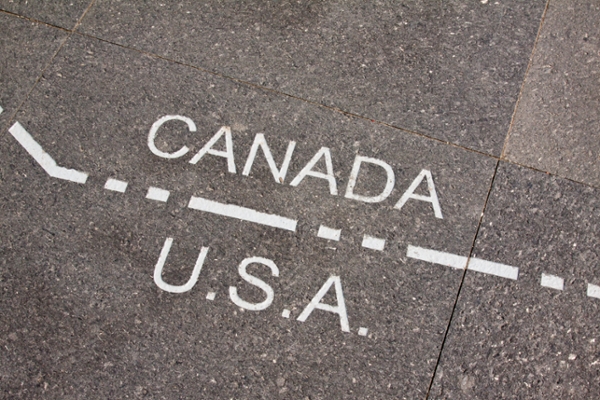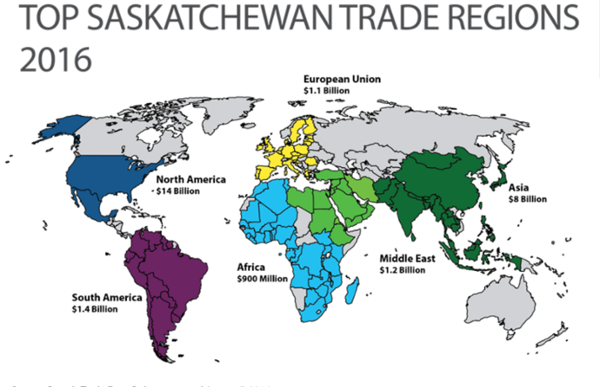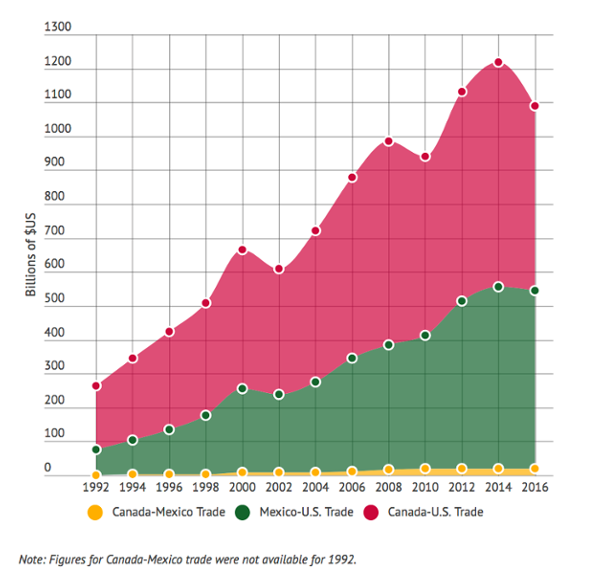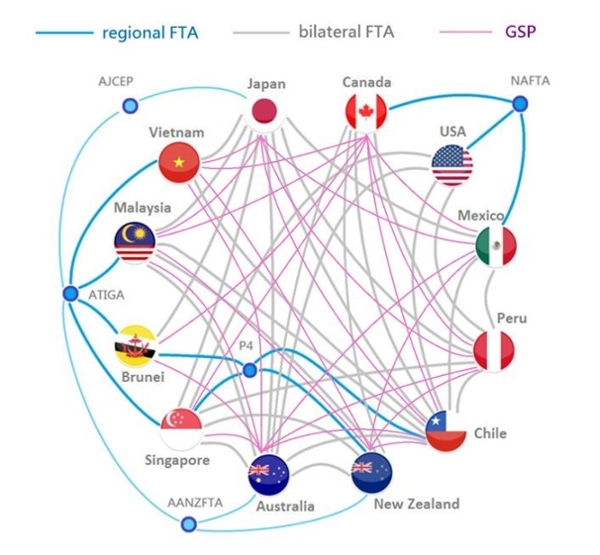
Ensuring prosperity: A new Canadian trade agenda
Trade is a cornerstone of Canada’s economy and society. The very idea of Canada was formed on the need to create a union based on trade and commerce.
By Colin Robertson, former Canadian Diplomat and Federal Trade OfficialThe Case for Trade
Trade is a cornerstone of Canada’s economy and society. The very idea of Canada was formed on the need to create a union based on trade and commerce. The fathers of Confederation agreed to reduce inter-provincial trade barriers as part of creating a nation because they knew it would help the promotion of Canadian exports and attraction of the foreign investment necessary to build factories and finance the railways to transport our goods to market. Today, virtually every aspect of our standard of living as Canadians -- most of what we eat, drink, wear and our modes of transportation -- is made possible by trade. International trade represents 60 per cent of our GDP, and one in five jobs is linked to exports. Quite simply, the wellbeing and quality of life of Canadians depends on our ability to trade and attract investment.1 A liberal trade policy has been and remains fundamental to Canada’s prosperity.
The world has changed, but the trade realities that applied in 1867 continue to apply in 2018. The facts of Canada’s trade-based economy are undeniable. We still sell what we harvest from our oceans, fields and forests, and what we mine onshore and offshore. We still need more foreign investment as well as better infrastructure – rail, pipe, grids and ports – that is cyber-secure to get our products and services to our global customers. We also need continued effort to reduce pernicious inter-provincial trade barriers that continue to defy the logic and promise of Confederation. The Canada West Foundation estimates that more than 100, 000 jobs in Saskatchewan depend on foreign trade.2
Natural resources continue to anchor the Canadian economy and the monetization of these resources requires access to global markets. Canada ranks 12th in the WTO table of leading exporters, ninth as importers and 16th in trade in commercial services.3 Include interprovincial commerce, and 80 percent of the Canadian economy depends on trade – internal and external.4 Half of what Canadians produce is exported.5 For Saskatchewan it‘s approximately 70 per cent.6 The United States is the top market for both Canada and Saskatchewan, followed by China.
It’s also important to recognize that trade forms the sinews of the nation. In fact, nearly 40 per cent of Canadian trade occurs within our borders.7 Economists estimate provincial protectionism costs us billions annually. The dispute between Alberta and British Columbia over the new Kinder Morgan pipeline is just the latest in a series of inter-provincial disputes. Confederation was supposed to remove inter-provincial barriers. The federal government has the constitutional “declaratory” authority (Section 92.10) to approve “works and undertakings connecting the Provinces … or extending beyond the limits of the Province.”8 Also Section 121 states: All articles of the growth, produce or manufacture of any one of the Provinces shall, from and after the Union, be admitted free into each of the other Provinces.”8
Unfortunately, the Supreme Court ruled in 1921 that “free” did not mean all products “of any of the provinces should be admitted into the other, but … they should be admitted ‘free’, that is to say without any tax or duty imposed as a condition of their admission.” The Supreme Court will soon hear a case on New Brunswick limiting the beer trade that a New Brunswick judge has ruled the restriction is unconstitutional, citing Section 121.9
If we could eliminate barriers between provinces,10 an exercise that western provinces have led on in recent years through the New West Partnership Agreement (2010) and now the Canadian Free Trade Agreement (2017),11-12 trade flows could be even higher, with commensurate benefits to consumers and gains to provincial coffers. As an aptly titled Senate study (2016) Tear Down These Walls argued “Canadians should be able to practise their profession or trade, operate a business whose goods and services can cross provincial/territorial borders, and purchase goods and services both freely and without penalty anywhere in this great country. The inability to do any of these diminishes us as a country, and makes citizens and businesses more tied to their region than to their nation.”13
Our history as a trading nation has earned Canada’s place in global supply chains, most notably in the manufacturing of passenger aircraft, trains, automobiles and energy-related products. We are also leaders in critical service industries like banking, insurance and engineering. Services are increasingly important to the Canadian economy, employing approximately three in four Canadians,14 and make up an increasing amount of our exports.15
In a world where trade linkages are an integral part of the global economy, trade has long since come out of the shadows and become part of the political dialogue. It is debate often framed by issues of sovereignty and self-determination, of economic efficiency and comparative advantage, of rich versus poor, developed versus developing nations.
Figure 1: Top Saskatchewan Trade Regions 2016.

In fora, like the World Trade Organization (WTO), OECD, IMF and World Bank, Canada often plays the role of ‘helpful fixer’ and bridge to consensus. For a trade-dependent nation like Canada, it’s obviously in our self-interest and the right thing to do. Canada draws most of its annual income from trade.16 So it is good trade policy to pursue the current effort to renew secure access to the United States, our most important market, through the on-going NAFTA negotiations. The same is true of the new trans-Atlantic and trans-Pacific agreements—Canada Europe Trade Agreement and the Comprehensive and Progressive Agreement for Trans-Pacific Partnership CPTPP—which seek to broaden and secure market access to Europe and Asia.
Trade Once Divided Canadians, Now It Unites Them
The Wilfrid Laurier Liberals fought and lost an election in 1911 on a renewed Canada-USA reciprocity agreement. While the Conservatives traditionally opposed freer trade with the U.S., Brian Mulroney changed his mind, and that of his party, and negotiated a Free Trade Agreement (FTA) with the U.S. The free trade initiative drew on the intellectual heft of the Royal Commission on the Economic Union and Development Prospects for Canada originally commissioned by his predecessor, Pierre Trudeau.17
The real success of the FTA, and later the North American Free Trade Agreement (NAFTA), was the confidence it gave Canadians to compete internationally. If most premiers opposed freer trade in 1988, today it is the premiers who are the most active advocates for freer trade. Surveys consistently demonstrate the majority of Canadians believe that trade works to their advantage and that Canada can compete both with the USA and globally.18
Freer trade also became a catalyst for domestic economic reform. The restructuring included the introduction of a national valueadded tax—the GST—and the economic growth it spurred helped federal and provincial governments to reduce and eliminate their deficits. Since the negotiation of the NAFTA, the federal Conservative and Liberal parties have mostly shared a commitment to freer trade and have pursued this objective when in government.
A Renewed NAFTA?
Figure 2: Trilateral trade between Canada, Mexico and the United States

When it comes to trade, for Canada it will always be the United States, and then the rest. We cannot change our geography, nor would we want to. That’s why securing the Canada-U.S. FTA was a pivotal point in Canadian affairs because it gave us preferred access to what is the biggest market in the world. With President Donald Trump, an avowed economic nationalist subscribing to the mercantilist notion of protectionism to achieve a trade surplus, the U.S. administration continues to ramp up barriers against foreign competition.19 In recent months, the United States has hit Canada with punitive tariffs on lumber, jets and newsprint and now threats to aluminium and steel. We can expect more of the same.20
Foreign Minister Chrystia Freeland’s “hope for the best, prepare for the worst” is a fair characterization of NAFTA’s prospects.21 Whether we can renegotiate the NAFTA will pivot on three issues:
- Can we preserve dispute settlement as a check against unfair protectionism?
- Can we find an equitable formula around trilateral content rules for cars, our most traded commodity?
- Will government procurement stay open to all three nations?
If we cannot resolve these issues, then we have to look to life without the North American free-trade agreement.
President Trump’s repeated threats to rescind NAFTA have galvanized hitherto-silent U.S. support into action, making this a U.S. debate that will be decided by U.S. interests. The farm community and business, two vital groups in the Trump coalition, want NAFTA improved, not rescinded. Surveys show a majority of Americans like NAFTA, which explains why senators and members of the House of Representatives, especially those in the Midwest and from Texas, are pressing the President to do no harm to NAFTA.22
For Americans, NAFTA is a litmus test of its place in the world. For the first time, the most important global economy wants to renegotiate a trade agreement by increasing trade barriers so as to balance its trade. With preferred access to the U.S. in question, Canada must look to market diversification, which means broadening our trade horizon.
Global Trade: A Spaghetti Bowl
The preferred venue for trade liberalization after the Second World War was the Geneva-based General Agreement on Trade and Tariffs (GATT), which eventually became the WTO as an institutional body to manage global trade.
Negotiations among the WTO’s 164 members is slower and requires more compromises. But that shouldn’t obscure the fact that the WTO is as an important international forum for trade discussions and the court for settlement of member trade disputes. For now, serious trade negotiations are conducted either bilaterally or regionally. Like-minded nations are turning to regional agreements like the CPTPP or bilateral accords like the Canada-Korea FTA to achieve trade liberalization. Increasingly, they address ‘beyond the border’ domestic regulations, such as public policy choices on investment, dispute settlement, innovation, intellectual property and, for Asia, state capitalism. The result is a ‘spaghetti bowl’23 of different agreements, of which the recently negotiated CPTPP is a good example. Companies parse the different agreements for advantages relating to differing rules of origin or intellectual property protection.
Ultimately, in an era where goods are “made in the world” of supply chains and of trade largely intra-firm or connected to global value chains (by some estimates, 80 per cent of all trade), business will demand one set of rules and the WTO likely will reassert its primacy as the main table.24-25
But good trade policy must also be coupled with good social policy. It must recognize that opening doors to trade inevitably involves the pain of economic dislocation and job loss for uncompetitive industries. Governments have an obligation to address adjustment needs through training in new skills. It also obliges government support for industry restructuring, as Canada did with its wine industry after the Canada-U.S. FTA by planting grape varieties producing wine that was good for more than taking the paint off cars.
Figure 3: Complex trade connections

Looking Forward: A Strategy and Implementation
The ultimate test of our trade agreements is their ability to generate economic opportunity and growth. That means Canada needs to take advantage of its positive international brand and do a better job selling our goods and services. Surveyed in 2013, of the more than 1.09 million SMEs operating in Canada, only 41,000 were exporting.1 To capture the domestic benefits of trade, we must do better. Here’s how:
1. Develop a new Canada Trade and Export Strategy26
A Trudeau government ministerial-mandate priority, such an initiative would help Canadian exporters fill their order books and secure contracts. The Harper Government’s Global Markets Action Plan,1 rolled out in November, 2013 set our priority markets and incorporates key government agencies to assist in this task, including Export Development Canada,27 Canadian Commercial Corporation and the Business Development Bank of Canada.28-29
2. The Prime Minister should hold a First Ministers’ conference around a national trade promotion strategy.
A revised strategy needs to address:
- International investment by Canadian firms, a necessary part of competing globally, including the role of pension funds;
- Canadian business participation in development bank projects, especially infrastructure;
- Foreign direct investment in Canada including state-owned enterprises and public-private partnerships;
- Internationalization of start-ups through reciprocal softlanding arrangements in incubators and accelerators in the United States and abroad;
- Target and encourage women-owned businesses to scale up and increase exports;
- Identifying opportunities for Canadian cyber tools, technologies and services, especially in emerging markets;
- Utilization of the Canadian diaspora and the family ties created by immigration to advance trade and investment;
- Integrating international education, immigration and tourism into our strategy.
The first ministers should re-validate the target countries and get on with trade promotion. Saskatchewan’s Trade and Export Partnership (STEP) is a model for collaboration between business and trade promotion that other provinces could emulate.30
3. Revitalize Canada’s Trade Commissioner Service (TCS)31
The world’s oldest national trade promotion organization (1884), trade commissioners are door-openers, matchmakers and a source of market intelligence for Canadian business. They help with the challenges of foreign languages, customs and regulatory thickets. Every dollar spent on the TCS generates $27 in increased exports.32 Those that access TCS services export 18 per cent more than comparable firms.32
Final Observations
The Canada brand in the global economy is solid. We need to exploit it. Canadian services in banking, insurance, and engineering are efficient and trusted. We are global leaders in medical and energy innovation and digital technology. Canada ranks 14th in the Good Country index, defined by what each nation contributes to the common good of humanity.33 The OECD Better Life index accords us a similar high ranking.34 As a trading nation we have become a nation of traders, and we need to commit to continuous improvement.
Our successful integration into North American markets, which account for almost 80 per cent of our trade, proves that Canadian business can successfully compete. We are meeting the Trump challenge by doubling down on our outreach and marketing into the U.S. Reminding Americans that Canada is their first market for 35 states and second or third for the other 15 states will help hone marketing skills that we need to apply globally.
Given the fundamental role trade has played historically in raising and maintaining Canada’s standard of living, we need to open new markets and expand our existing base. Trade and investment promotion will always be the main drivers, but we should broaden our marketing scope to include tourism, a money generator and a precursor to attracting international students to our colleges and universities.
As important as the U.S. market remains for Canada, the world trade map is being redrawn. The emergence of China specifically, and Asia more broadly, as a primary engine of global economic growth means a trade-dependent nation like Canada must adapt and adjust. This is a pivotal moment for trade policy in Canada. As history has demonstrated, nothing less than our standard of living and quality of life depend on getting it right.
Works Cited
1http://international.gc.ca/global-markets-marches-mondiaux/plan.aspx?lang=eng#message
2http://stat.wto.org/CountryProfile/WSDBCountryPFView.aspx?Language=E&Coutnry=CA
3www.gobal-economics.ca/northsouth.htm
4https://data.worldbank.org/indicator/tg.val.totl.gd.zs
5https://www.saskatchewan.ca/business/investment-and-economic-development/exporting-and-trade
6http://news.gc.ca/web/article-en.do?nid=877619
7http://laws-lois.justice.gc.ca/eng/const/index.html
8https://ipolitics.ca/2017/06/06/yes-the-feds-could-force-trans-mountain-on-b-c/
9http://www.theglobeandmail.com/report-on-business/economy/canada-competes/why-are-we-blocking-free-trade-between-provinces/article11541453/?page=all
10http://www.newwestpartnershiptrade.ca/the_agreement.asp
11https://www.cfta-alec.ca/
12https://sencanada.ca/content/sen/committee/421/banc/reports/2016-06-13_banc_fifthreport_ss-2_tradebarriers(final)_e.pdf
13https://lop.parl.ca/content/lop/reserachpublications/2016-42-e.pdf
14http://www.international.gc.ca/trade-agreements-accords-commerciaux/topics-domaines/services/index.aspx?lang=eng
15http://www.international.gc.ca/economist-economiste/performance/state-point/state_2012_point/2012_7.aspx?lang=eng
16http://publications.gc.ca/site/eng/472251/publication.html
17http://www.latimes.com/world/mexico-americas/la-fg-canada-trade-20161030-story.html
18https://www.commerce.gov/news/press-releases/2108/01/us-department-commerce-issues-affirmative-final-determinations-fine
19https://www.theglobeandmail.com/report-on-business/us-newspapers-warn-of-devestating-impact-from-duties-on-canadian-newsprint/article37565314
20https://www.theglobeandmail.com/politics/freeland-on-nafta-hope-for-the-best-and-prepare/videodf63b038-9bea-43b8-b11d-ae5e541d6bca
21http://www.pewreserach.org/fact-tank/2017/11/13/americans-generally-positive-about-nafta-but-most-republications-say-it-benefits-mexico-more-than-u-s/
22http://www.rieti.go.jp/en/comlumns/a01_0193.html
23http://www.wto.org/English/news_e/sppl1267_e.htm
24http://unctad.org/en/publicationslibrary/diae2013d1_en.pdf
25http://pm.gc.ca/eng/minister-international-trade-mandate-letter
26https://www.edc.ca/en/pages/default/aspx
27http://www.ccc.ca/
28https://www.bdc.ca/en/about/who-we-are/pages/default.aspx
29https://www.sasktrade.com/
30http://tradecommissioner.gc.ca/index.aspx?lang=eng
31http://www.parl.gc.ca/content/hoc/committee/411/ciit/reports/rp5478079/ciitrp03-e.pdf
32https://goodcountry.org/index/results
33http://www.oecdbetterlifeindex.org/#/11111111111
Colin Robertson

A former Canadian diplomat, Colin Robertson is Vice President and Fellow at the Canadian Global Affairs Institute, an Executive Fellow at the University of Calgary’s School of Public Policy and a Distinguished Senior Fellow at the Norman Paterson School of International Affairs at Carleton University. He is on the advisory councils of the Conference of Defence Associations Institute and the North American Research Partnership. Colin writes a column every two weeks on foreign affairs for the Globe and Mail and is a regular contributor to other media.

